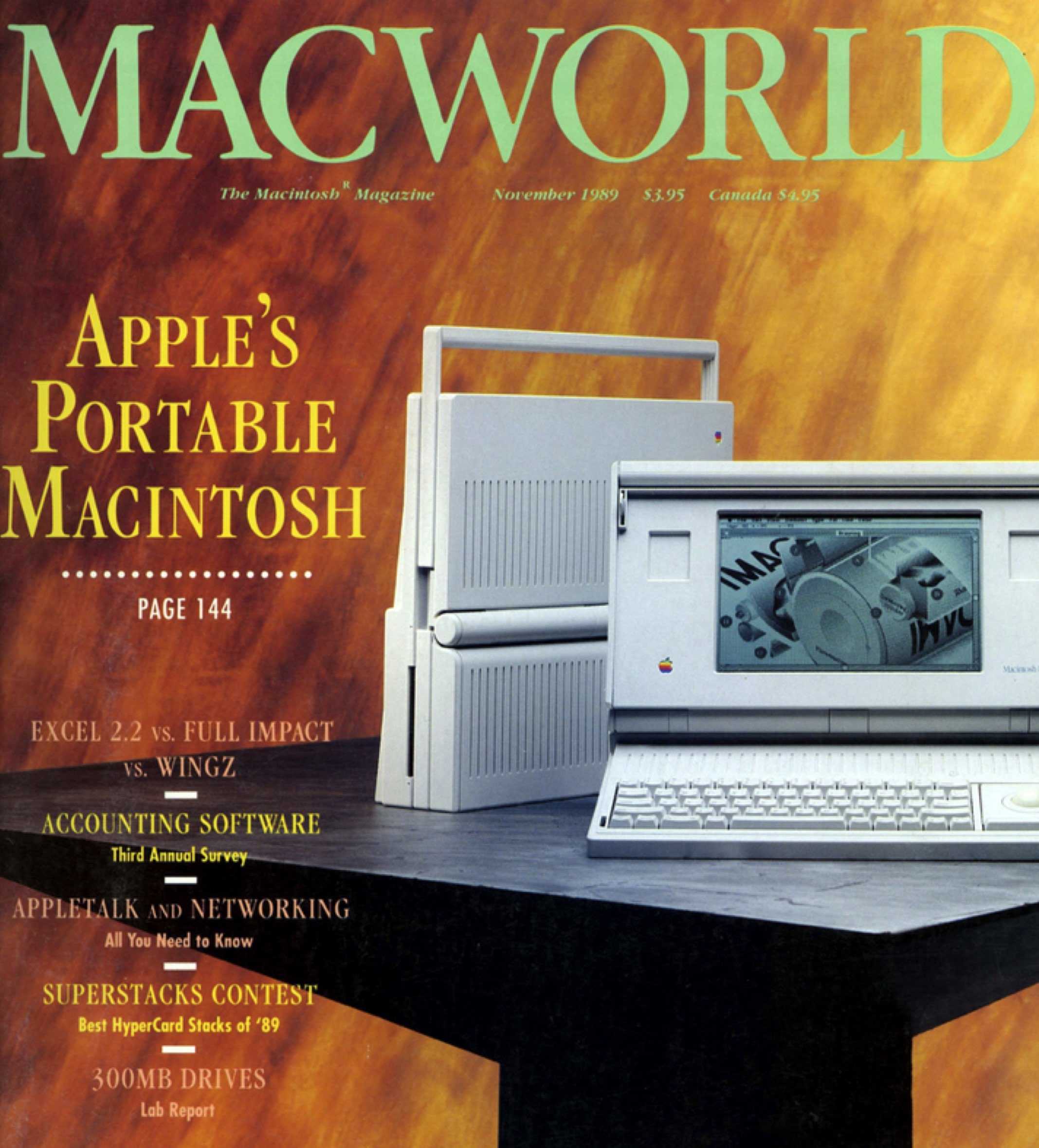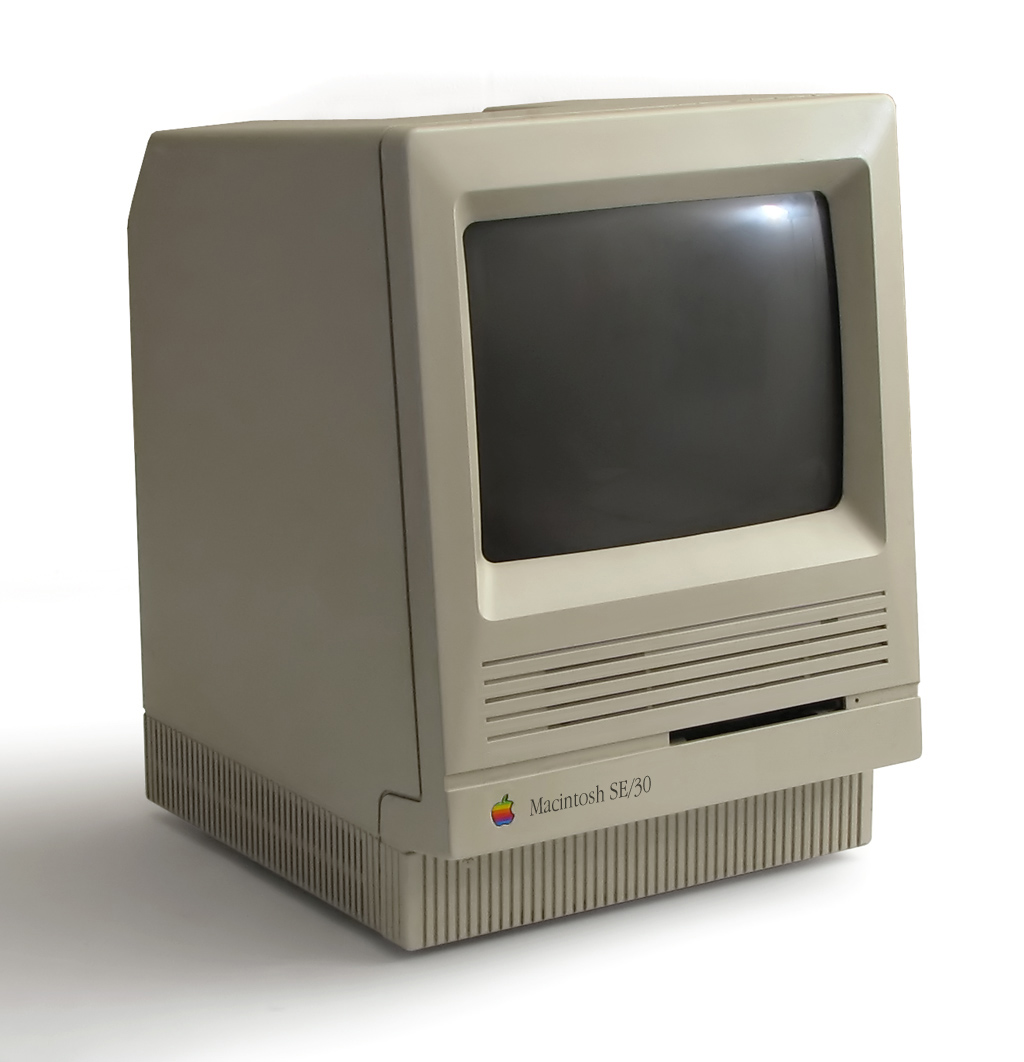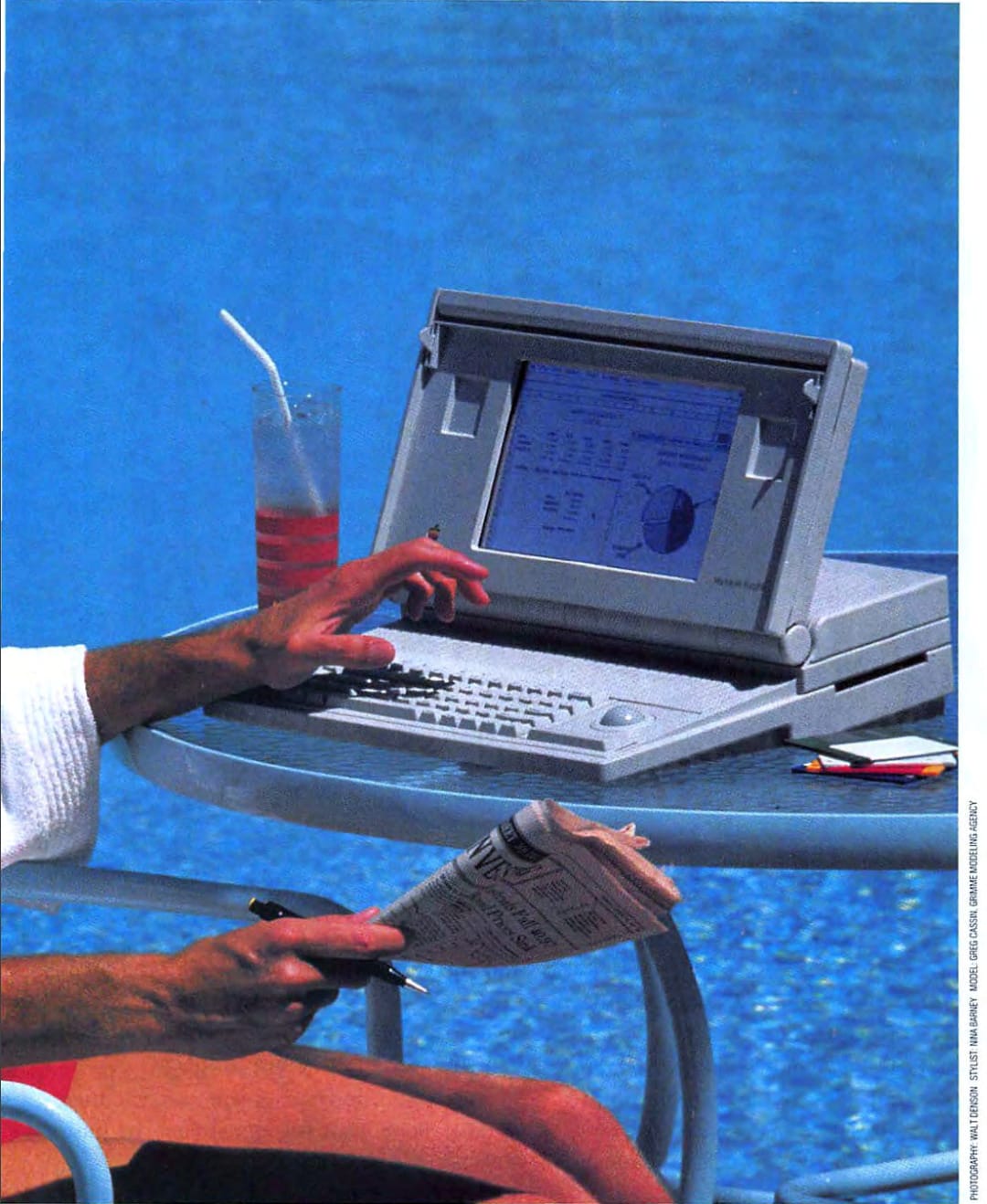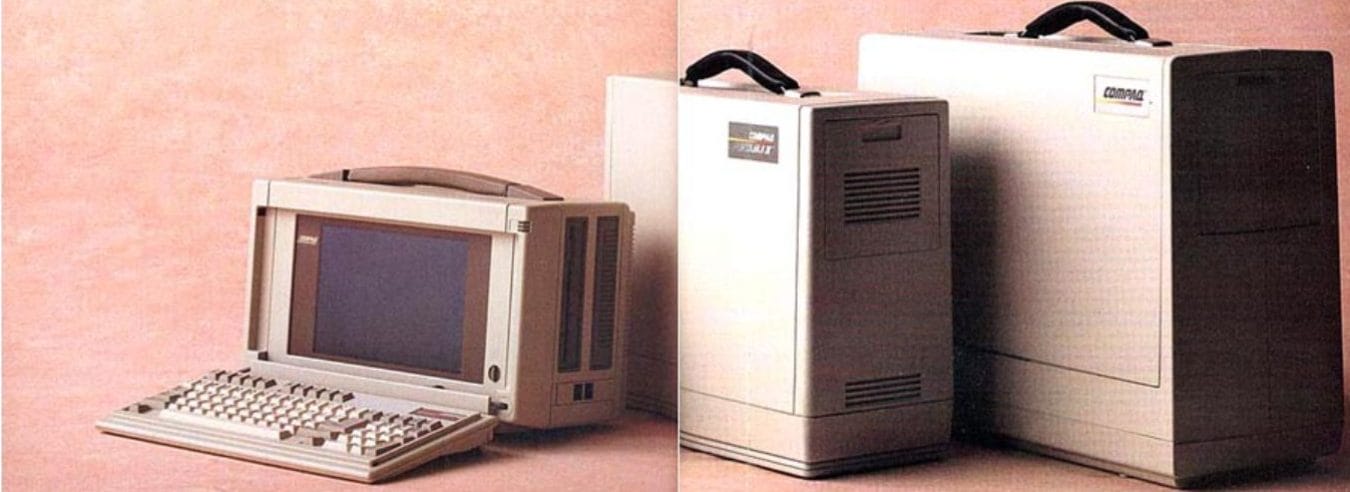Well, in typical Apple fashion, we will never know exactly what happened as Apple closely guards its secrets then and now – but we can still piece some things together. In a recent (2018) blog post, Gassée claims at the time of the Macintosh Portable’s release, he already thought of it as being too clunky and had already wanted to approach Sony to assist Apple in miniaturization:
“Another project, the Mac Portable, isn’t as successful. Convinced it’s going to be too big and heavy, I want to bench the project lead and ask Sony to partner with us to develop a much smaller portable Mac. It seems like a perfect marriage: Sony is already a well-liked Apple partner, and their talent for miniaturization, aesthetics, and good manufacturing is indisputable. I get strong push back on the proposed moves, complete with accusations of being anti-American. I lose my nerve and capitulate.“
Excerpt from: MondayNote.com (full article here)

We don’t know who gave the “strong pushback” exactly – though he implies it was John Scully, judging by the rest of the blog post. Of course, this is only his side of the story. Though, I must say I find it a little hard to believe that the Head of Macintosh Development would have simply allowed Apple’s first mobile computing device to be this clunky. There has to be more to the story. Personally, I suspect that Gassée, known for his artistic and perfectionist flair, was convinced an actual laptop would compromise the “Macintosh” experience that Apple was known for, and arrived at the conclusion that a luggable would be a better fit.
Whether or not this is true or not is pure speculation of course. When pressed by reporters on the weight of the Macintosh Portable during the launch event, in a reply fit for an artist, Gassée reassuringly mused:
“All I know is, when people touch it, when they put their hands on it, they want it, even if its heavier”.
E. SCOTT RECKARD. (1989, September). Apple Unveils Portable Macintosh Computer (UNIVERSAL CITY, Calif.). Associated Press.
Sounds like there was perhaps a tiny bit of denial at the time of the launch. Though there was some logic in his thinking – Apple fans had a track record of buying anything made by Apple, but perhaps this time Gassée and/or the product development team had gone too far in terms of the weight, and not far enough in terms of the innovation.
Though on some level Gassée knew that the Macintosh Portable was going to be a failure, with one book on Apple history stating:
“We knew the Luggable was a dud. But it was a first product… I offered to give a two-hundred-dollar trade-in for anyone who bought in a Luggable in exchange for a Be box. I wanted to destroy all evidence”
Carlton, J. (1997). Apple:: The Inside Story of Intrigue, Egomania, and Business Blunders (1st ed.). Crown Business.
Sounds messy. Whatever happened, it didn’t end well for Gassée, as he was forced out of Apple a year after the Macintosh Portable was launched. John Scully and the board were apparently dissatisfied with Gassée’s performance at delivering new products and forced his removal.

It seems, one way or another, through some combination of mismanagement and a lack of understanding, the Macintosh Portable was developed as a backward-looking 1980s portable, and not a forward-looking, 1990s laptop.
Price of the Bleeding Edge: The Active-Matrix Display
Though the Macintosh Portable was hefty both in weight and price, it did pack a punch with new screen technology. The Macintosh Portable dazzled people with its display and was the most technologically advanced at the time. It was the world’s first commercially available active-matrix LCD, setting the Macintosh Portable apart, though to save on power, it was initially not backlit. All other portables & laptops were passive matrix – a slight step up from the calculator-like LCD screens of early portable computers but had poor contrast and were notorious for image blur & ghosting. Apple’s active-matrix LCD was revolutionary as each pixel could be toggled and refreshed rapidly, independent from neighboring pixels. This resulting sharp image, even with on-screen movement, allowed for a superb user experience when coupled with the Mac OS GUI. In the end, active-matrix became standard technology in all LCDs (even to this day) due to its superior performance.
Though there is always a drawback to using cutting-edge technology – it’s expensive. Lack of economies of scale and low production yields on the new technology contributed significantly to the Macintosh Portable’s astronomical price. Another side-effect of pushing the technological envelope is supply chain unpredictability. Product ship dates are often delayed for absolute cutting-edge tech and are therefore a closely guarded secret. It must have been a nightmare for Apple, when, in one of the earliest “Apple leaks“, news broke about an Apple employee releasing internal documents outlining the Macintosh Portable in February 1988.
Why was there a leak? We don’t know exactly, but by this time, the Macintosh Portable had already been in an advanced stage of development for at least a year. We know this as the unique keyboard PCB of the Macintosh Portable has a silk screen date of 1987. Additionally, these other photos below from AppleDesign show other prototypes with non-active-matrix LCDs from early 1986. It seems like the initial designers came up with a laptop, and Apple responded by adding a Numpad and a smaller, active-matrix screen.

(Macintosh E) March-September 1986. (source)
Perhaps the leak was intended to motivate Apple to not wait for the Active Matrix LCD. Or perhaps it was to show the Macintosh community what a literal “big” mess the Apple Portable was going to be. Of course, Apple did the right wrong thing: After the un-intended publication of its plans, Apple waited. It took a devastatingly long, one-and-a-half years to bring the Macintosh Portable to market (release date: September 20, 1989). That is 3 years from the dates of the original design concepts. Apple had broken the cardinal rule with new tech and had waited too long for it to be perfected. When the Macintosh Portable was finally released, it was already seriously dated. Most manufacturers had shifted focus to laptops, and the remaining portables and luggables on the market were more powerful and portable than Apple’s offering. It almost seems like Apple had forgotten that they were in the fast-paced, high-tech world, where computers were out of date within 18 months. The LA Times summarised it best, by noting at the Macintosh Portable launch event: “This machine would have been OK 12 months or 18 months ago. But not today“.
The Problem With Extended Family
In addition to the lengthy delays, Apple also priced what remaining customers they had out of the market. The Macintosh Portable launched with a list price of US$7,499 (equivalent to over US$15,500 in 2021). US$7,499 was a tough pill to swallow for many Mac users – especially since the Macintosh Portable was similar in functionality to its CRT-based cousin, the Macintosh SE/30 – priced at US$4,369, some $3000 less. It also didn’t help that all Compact Macs had a built-in carrying handle, and were treated as luggable “portable desktops” by many. The only meaningful differentiator of the Macintosh Portable was battery power, but that came with an additional trade-off. To conserve power, the launch version of the Macintosh Portable, unbelievably, had no backlight, greatly limiting its appeal further.

To top it off, the Macintosh SE/30 sported a state-of-the-art 68030 CPU, which could run circles around the Portable’s 68000. Existing Mac users did not see their desires for portability met, and those thinking about getting into Macs balked at the Portable’s astronomical price and dated appearance. Resultingly, stating demand as lackluster would be an understatement for the Macintosh Portable, and Apple sold less than 10,000 units in its first quarter of release. This led to the first of many price slashes of the Macintosh Portable with the first being $1000 off in April 1990 (just 7 months after launch). The fire-sale tactics could not save the Macintosh Portable and it was quietly discontinued in 1991.

Apple did try to improve the appeal of the Macintosh Portable midway through its retail life by releasing an updated model that incorporated a backlight into its LCD (along with a further reduced price tag) in 1990. An upgrade option was also available to allow existing users to swap out the non-backlit display for a backlit one (though it cost $1165 for the upgrade). Sadly, this attempt to fix a flaw of the Macintosh Portable did not help much – as though it left the Portable with a much improved backlit display, it reduced the battery life by up to half, resulting in the Portable having a battery life similar to much more portable competing laptops.


If At First You Don’t Succeed, Try, Try, Try Again
A year on from the departure of Gassée, Apple released the Powerbook 100 series of laptops with great success in 1991. The PowerBook was what the Macintosh Portable should have been, and set the stage for modern laptop design in the coming years. With its shallow, condensed keyboard, appropriately sized and repositioned trackball, miniaturized components, and compact footprint, the Powerbook is Apple’s first “true” laptop (one that you could actually use in your lap!).
Not everything in the new PowerBook, however, came from a clean slate – the cutting-edge screen module on the Macintosh Portable had been ported over to the top-of-the-range Powerbook 170, and the low-end Powerbook 100 used the same basic circuit design as the Macintosh Portable, with Sony assisting in miniaturization to fit it in the smaller footprint. In fact, both the entry-level Powerbook 100 and the mid-range Powerbook 140 used passive-matrix LCD displays – and were wildly successful. It seems that a slightly less crisp display was an acceptable compromise after all. The PowerBook was truly a laptop for the 1990s, capturing 40% of the laptop market with its updated design and true portability. This left the poor Macintosh Portable looking even more dated than it already did at launch, and was soon forgotten – it is hard to believe that both of these computers were sold retail at Apple in the same year within 6 months of each other.


Though the Macintosh Portable was a commercial failure, it was an essential stepping stone marking a critical juncture in Apple’s history. It marks the point when Apple recognized portable computing would be the shape of things to come and incorporation of that idea into their strategy. All of Apple’s world-transforming products, from the MacBook to the iPod to the iPhone, can trace their roots back to their hefty great-grandfather, the Macintosh Portable.
Whilst the Macintosh Portable might have been a commercial failure, I actually love using mine as a desk-bound Mac:
Or
Or go back to part 1: The Macintosh Portable -A Tale of Too Big, Too Late


